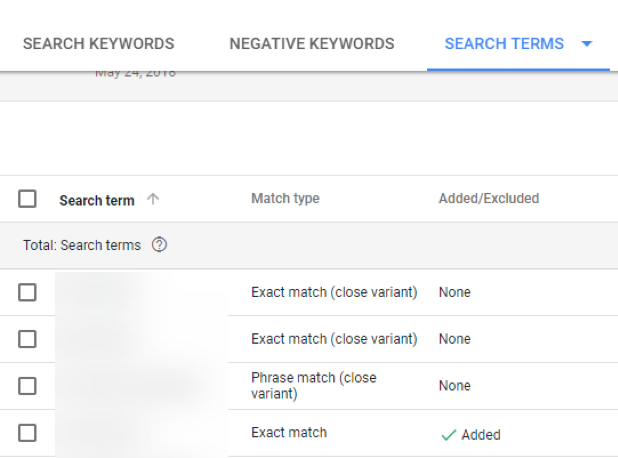
All Blogs,Digital Marketing, - March 15, 2021
Google Ads Decreases Search Terms Report Visibility
Expert Tips For Google Ads Pay Per Click Marketing
Leverage is the sweetest word in the language of business. With a 92% share of search engine traffic worldwide, Google certainly has traffic. And leverage.
Google’s primary source of income is advertising. And most of that advertising is based on pay-per-click or PPC ads based on keywords that advertiser bids on to secure traffic to their website.
If you search a term on Google, you get both organic results and paid results. The paid results are at the top of the page with “Ad” preceding the search result. The organic results follow based on SEO and Google rankings.
This discussion will focus on PPC ads on Google and a recent change by Google that has impacted the cost and effectiveness of PPC ads on Google.
On September 1, 2020, Google announced that the search terms report within Google Ads would show only search terms that reach a volume threshold. This reduced visibility into ad campaigns has caused immediate concern among advertisers and agencies, who rely on the report’s insights to optimize their Google Ads performance.
In simpler words, advertisers will have reduced visibility into which search queries trigger their ads, even if they incur a click or conversion. What gives?
Per Search Engine Land, Google is citing that this change is related to privacy, stating that with this update they are trying to, “maintain our standards of privacy & strengthen protections around user data.”

But what does “significant” mean? This measure is subjective and Google’s definition of “significant” may vary greatly from how an advertiser may measure that word. This ambiguity is one of those Google rules that advertisers have to live by and try to figure out. This change to Google search trends and Google keywords could mean a lot to marketers that depend on Google ads.
The search terms report is a feature within your Google Ads account that allows you to see precisely which search terms triggered your ads to appear, as well as how closely those terms relate to the keywords your ad is targeting.

This means you will no longer be able to use this report to see all of the search terms triggering your ads. In particular, you will not see the search terms that have lower volume. So, what’s the big deal about not being able to see lower volume Google search keywords? What it means is that your Google Ads can be significantly less targeted based on Google keywords!
Here’s how that seemingly small change has impacted Google search trends for PPC ads.
Before the update:
- For every $100K you spent on Google search, you got search term data for $98,700 of it.
- You got on your ads for every 100K clicks; you saw search term data for 98,300 of those clicks.
After the update:
- For every $100K you spend on Google search, you get search term data for $71,000 of it.
- For every 100K clicks you get to your ads, and you see search term data for 77,900 of those clicks.
Less visibility for advertisers means that Google can create a new market for lower volume search terms. Advertisers must re-evaluate their keyword strategy for PPC ads on Google. If they can’t find a way around the new rule, they may need to spend more to attain the same click volume before the change.
The resulting reduced visibility into search queries has many advertisers disconcerted, as this report was paramount to Google Ads optimization.
- It inhibits small, proactive tweaks that can be made to plug what will amount to big leaks in spending.
- It makes keyword mining more difficult and renders broad matches unusable.
- It leads to lower bidding and reduced conversion rates.
- It hinders the ability to create single keyword ad groups.
What does this mean for websites that depend on Google Ads for traffic?
Here are the keys to success that Agency Partner recommends to its clients.
- Continue optimizing
- Don’t lose sight of the value that all of your work to date has produced. Stay on strategy for the highest volume keywords.
- Use the Bing search query report.
- Even though Bing is a fraction of the size of Google in terms of the search share, Google and Bing use very similar technology. Test and explore Bing search trends and see if there is anything you can learn to improve Google results.
- Launch Dynamic Search Ads to find new keywords
- Dynamic Search Ads on Google could maximize your current landing pages and help consumers find you even if your original PPC keywords didn’t cover the keywords that helped your consumer find your site.
- Use Smart Bidding to optimize for “hidden” search terms.
- This is what Google wants, and it’s a way around this new policy.
- Dynamic search ads are great at targeting your ads based on your landing pages’ context and can ultimately help reach audiences for search terms that you didn’t cover with your keywords.
Agency Partner has technologists that deal everyday with Google and its algorithms, rules, and policies. Our job is to help clients find ways to spend their advertising dollars most efficiently to maximize Google search visibility. Whether it is SEO on Google or Google Ads, we pride ourselves on knowing the latest trends on Google.
There will be more subtle Google changes in the future. They are rarely announced. The key is to be aware of the changes as soon as possible and respond to Google search trends as quickly as possible.
Agency Partner watches Google trends every day. It’s our reason for being. If we can’t bring value to our clients in “playing the game” with Google, we have no reason to be.
Not big on reading? That’s okay. Watch “Google Ads Decreases Search Terms Visibility” instead. Using the power of Artificial Intelligence, we turned this blog into a video for you. Check it out below!












